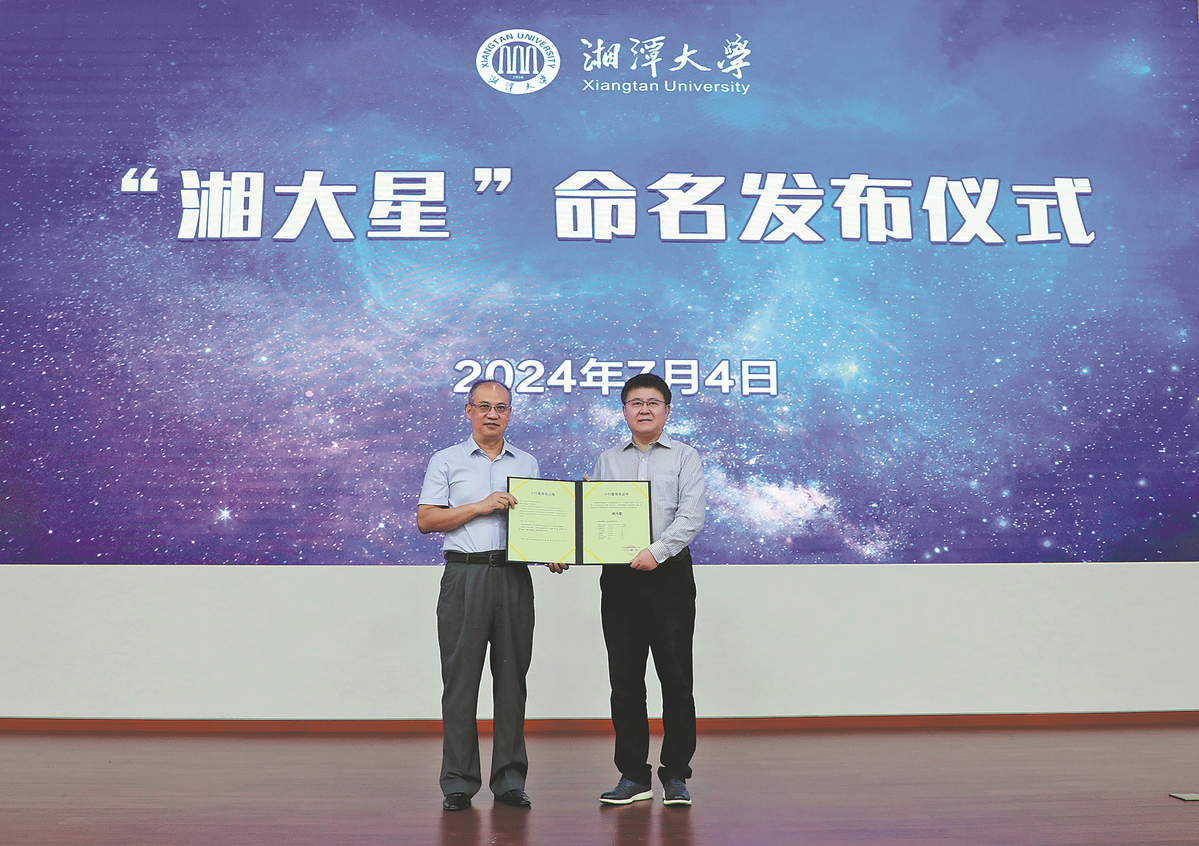
It is a big moment for the Xiangtan University in Hunan province as it commemorates the 50th anniversary of its reopening in 1974. An asteroid is named after the Chinese abbreviation of the university's name Xiangda, thus becoming the first university in Hunan to have a small planet named after it.
Xiangtan University was initially established in 1958 under the instruction of late Chinese leader Chairman Mao Zedong, with Mao inscribing the name of the university. Mao was born and raised in Shaoshan, Xiangtan.
The naming of minor planet is exclusive and irreplaceable.
To date, around 20 Chinese universities have minor planets named after them. Peking University was the first to do that on May 4, 1998, which marked the 100th anniversary of its establishment.
The National Astronomical Observatories of the Chinese Academy of Sciences discovered "Xiangda" on Aug 22, 1998 and the small planet was initially given the provisional number"1998QJ5".
On Nov 8, the International Astronomical Union officially approved naming the minor planet "Xiangda".
The international permanent number of "Xiangda" is "74092", of which the number"74" symbolizes the reopening of Xiangtan University in 1974.
Liu Jifeng, head of the NAO, presented the certificate and the orbit diagram of "Xiangda" to the university.
He said naming the small planet after the university shows the outstanding contributions it has made in higher education, scientific research, talent cultivation and social services.
It also demonstrates international recognition of Xiangtan University's achievements in academic fields.
The NAO will continue to collaborate with the school to promote the development of astronomy and big data in China, striving to build an influential astronomical big data research team and work together to promote the development of the country's astronomical industry.
The planet is located between Mars and Jupiter, with its farthest distance from Earth being 600 million kilometers and its closest being 210 million km.
The average distance between "Xiangda" and the sun is 400 million km, with 450 million km as the maximum distance and 360 million km as the minimum. It takes 4.47 years for the minor planet to orbit the sun.
Pan Biling, president of Xiangtan University, expressed sincere gratitude and accepted this special gift on behalf of the university.
Over the past 50 years since its reopening, the university has made significant achievements in student enrollment, education development and scientific research.
In the field of astrophysics, it began research on the stars in the early 1990s and has developed a distinctive academic research team, according to the university.
Recently, it established the Key Laboratory for Stellar and Interstellar Physics in Hunan province, focusing on frontier research in the physics of interstellar mediums, physics of stellar and binary stars, and computational astrophysics. The official naming of the "Xiangda "on the occasion of Xiangtan University's 50th anniversary of its reopening will inspire all students and faculties, Pan said.
The university will take this opportunity to further deepen cooperation with the NAO, focus on cultivating more outstanding talent and produce more first-class academic achievements, making new and greater contributions to the high-quality development of the country's astronomical industry.
来源:ChinaDaily
编辑:田兴雨
 时刻新闻
时刻新闻